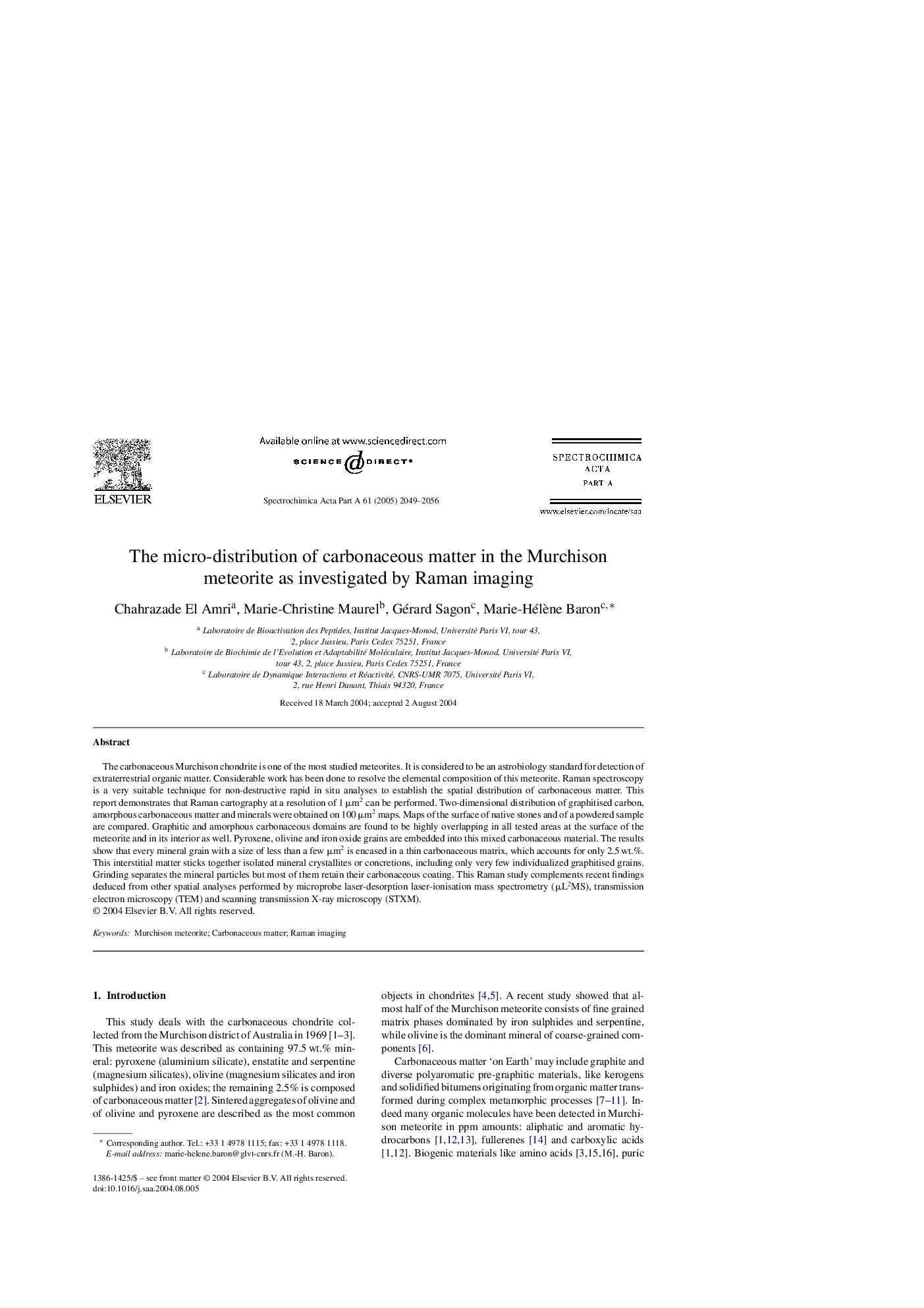| Article ID | Journal | Published Year | Pages | File Type |
|---|---|---|---|---|
| 1238892 | Spectrochimica Acta Part A: Molecular and Biomolecular Spectroscopy | 2005 | 8 Pages |
The carbonaceous Murchison chondrite is one of the most studied meteorites. It is considered to be an astrobiology standard for detection of extraterrestrial organic matter. Considerable work has been done to resolve the elemental composition of this meteorite. Raman spectroscopy is a very suitable technique for non-destructive rapid in situ analyses to establish the spatial distribution of carbonaceous matter. This report demonstrates that Raman cartography at a resolution of 1 μm2 can be performed. Two-dimensional distribution of graphitised carbon, amorphous carbonaceous matter and minerals were obtained on 100 μm2 maps. Maps of the surface of native stones and of a powdered sample are compared. Graphitic and amorphous carbonaceous domains are found to be highly overlapping in all tested areas at the surface of the meteorite and in its interior as well. Pyroxene, olivine and iron oxide grains are embedded into this mixed carbonaceous material. The results show that every mineral grain with a size of less than a few μm2 is encased in a thin carbonaceous matrix, which accounts for only 2.5 wt.%. This interstitial matter sticks together isolated mineral crystallites or concretions, including only very few individualized graphitised grains. Grinding separates the mineral particles but most of them retain their carbonaceous coating. This Raman study complements recent findings deduced from other spatial analyses performed by microprobe laser-desorption laser-ionisation mass spectrometry (μL2MS), transmission electron microscopy (TEM) and scanning transmission X-ray microscopy (STXM).
